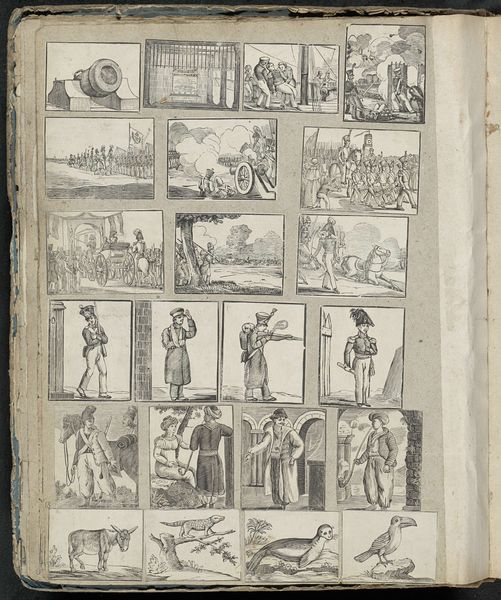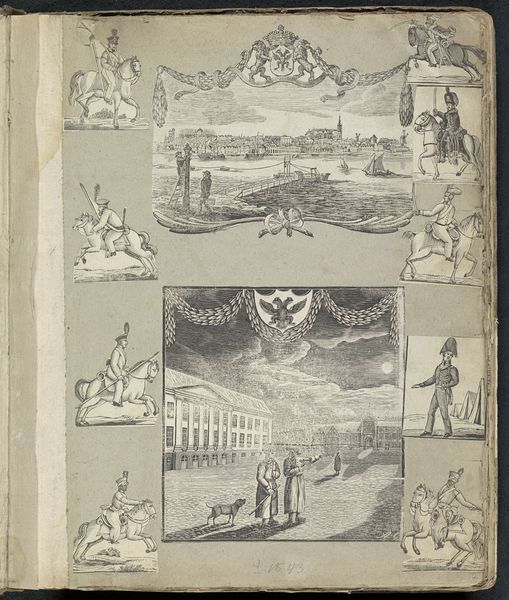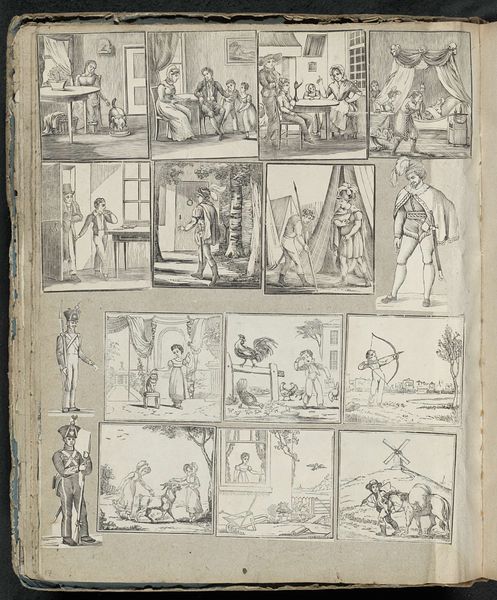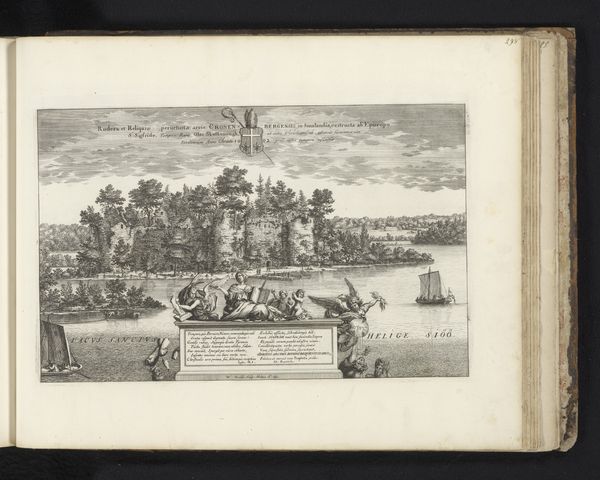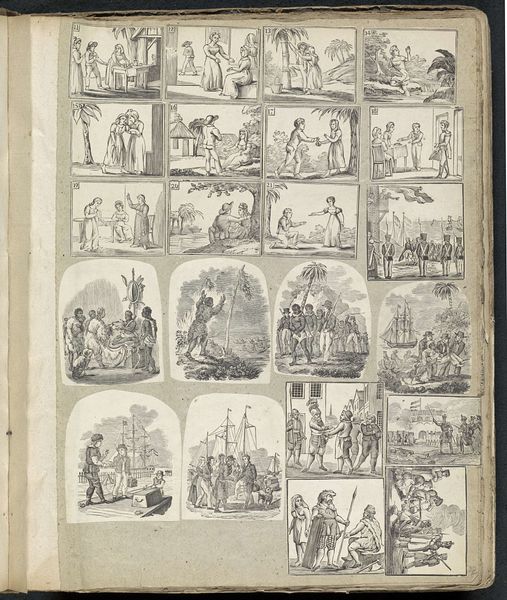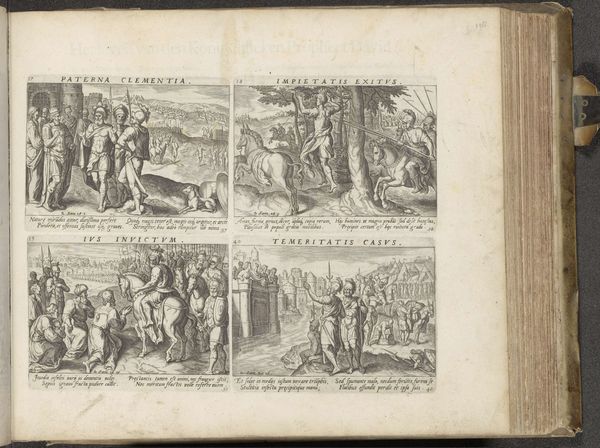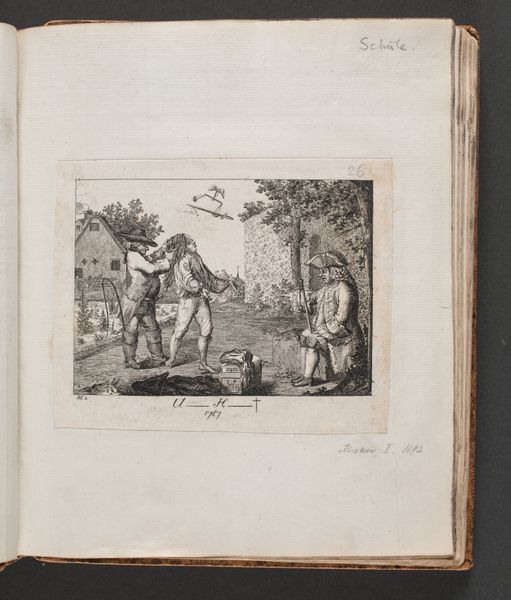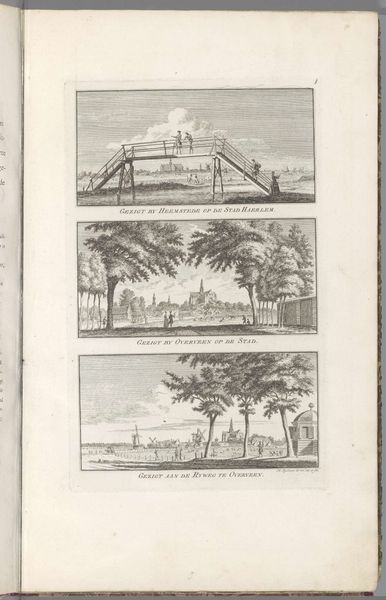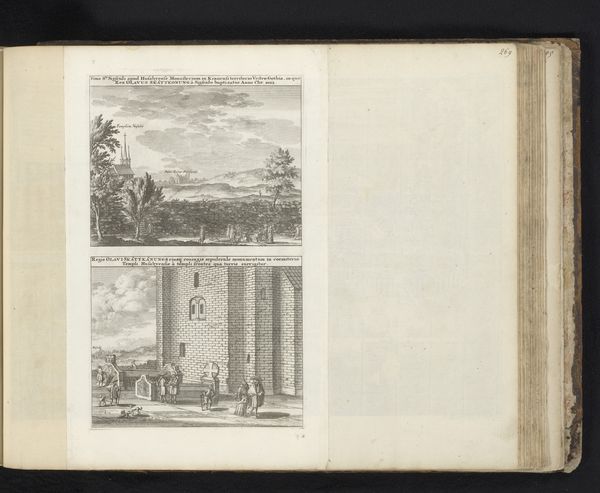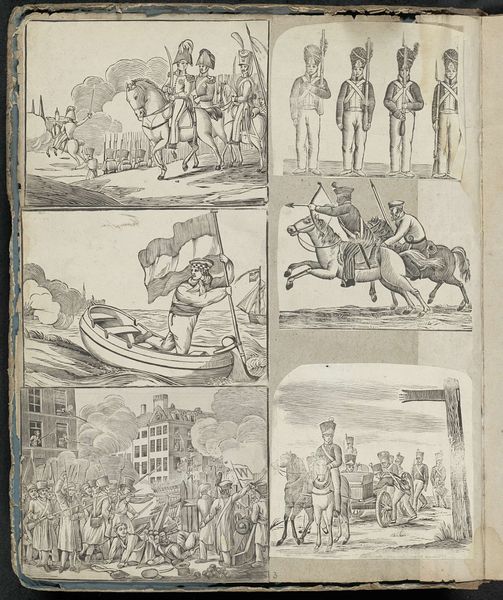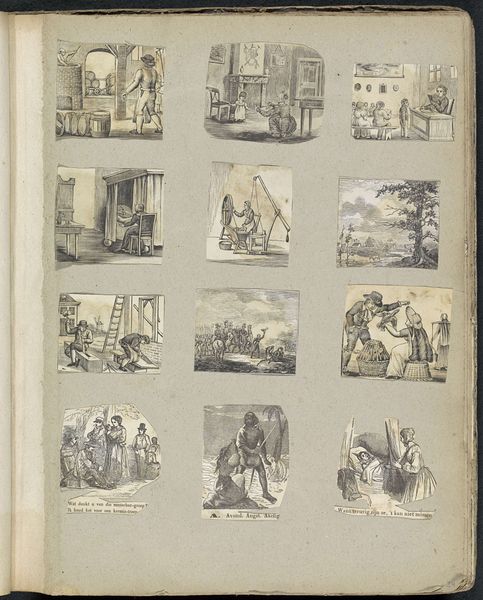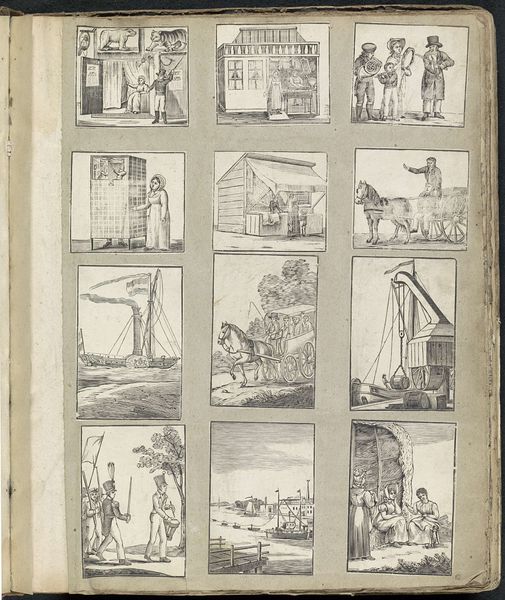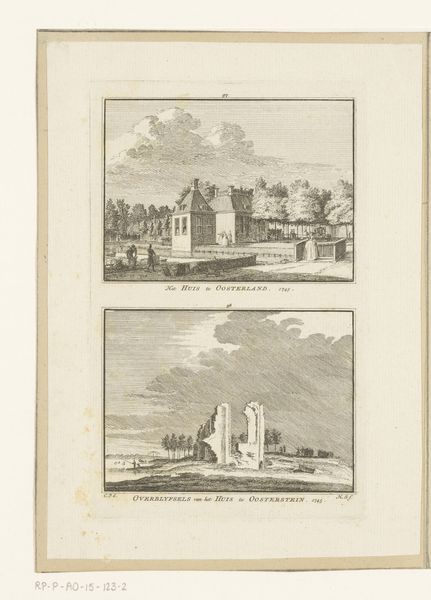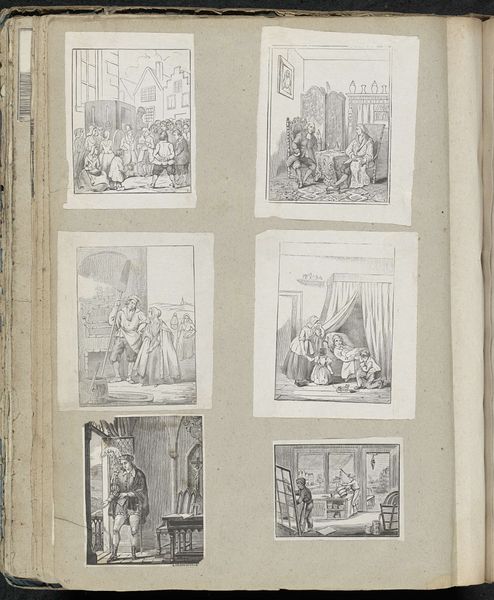
drawing, paper, ink
#
drawing
#
neoclassicism
#
landscape
#
paper
#
ink
#
romanticism
#
cityscape
#
genre-painting
#
history-painting
Dimensions: height 400 mm, width 336 mm
Copyright: Rijks Museum: Open Domain
Curator: Before us is a page from Alexander Cranendoncq's "Albumblad met diverse voorstellingen," created sometime between 1814 and 1869. The medium is ink on paper, a compilation of various scenes. Editor: My eye is drawn immediately to the sheer variety—it feels like a visual scrapbook. The vignettes create a wonderful, disparate collection. What initially stands out is the depiction of crumbling architectural facades and romantic landscapes; they almost have a postcard quality. Curator: Indeed. Consider the emotional weight behind presenting history in this manner. The ruined structures symbolize time's passage, the fragility of human achievements juxtaposed with nature’s endurance—powerful symbols resonant with Romantic ideals. We also see neoclassical elements. How do these traditions affect our interpretation? Editor: The materiality is significant; ink on paper allows for incredibly detailed, reproducible imagery. It facilitated the broad dissemination of artistic and cultural ideas, allowing even those unable to afford originals access to idealized landscapes and historical narratives. Think of the socio-economic implications. Curator: Precisely! The ability to circulate these images widely influenced societal understanding of history, aesthetics, and national identity. Each scene acts as a vessel, carrying cultural memories and influencing perceptions. The scenes involving groups of people offer the idea of social continuity. Editor: And the printing process itself is fascinating. This wasn't a solitary artistic act but involves collaboration. How were these images physically reproduced? Engravings, perhaps? The labor that goes into creating plates capable of such precision shouldn't be overlooked. How do techniques reflect cultural ideas about value and craftsmanship? Curator: Good question. Each style is clearly distinguished. The choice in the specific printing technique influenced its circulation and meaning. One should appreciate how the styles and subjects reflect cultural preoccupations and social ideals prevalent at the time, contributing to its impact on viewers then and now. Editor: Considering these miniature landscapes and scenes as commodities really alters my perspective. The album leaf shifts from being simply art to being evidence of the material conditions of artistic production and consumption, shaping social value around artwork in culture. It speaks volumes about the accessibility of art. Curator: I agree. Looking closely has heightened my awareness of its complexities—the artwork holds layers of stories, traditions and social insight, reflecting how visuals contribute to our ever-evolving perception of time. Editor: Absolutely. Thinking about Cranendoncq's methods definitely enriched the experience of interpreting how materials create contexts for experiencing culture and its complex relationships to art.
Comments
No comments
Be the first to comment and join the conversation on the ultimate creative platform.
